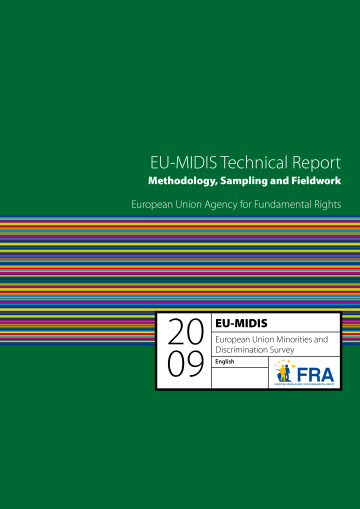Help us make the FRA website better for you!
Take part in a one-to-one session and help us improve the FRA website. It will take about 30 minutes of your time.
EU-MIDIS Data in Focus Report 5: Multiple discrimination
Within the framework of its EU-wide survey on discrimination of immigrants and minorities, EU-MIDIS, the FRA interviewed 23,500 people with an ethnic minority or immigrant background in all 27 EU Member States. Key questions on grounds of discrimination are comparable with results from a Eurobarometer survey of the majority population.
The findings show that people belonging to ‘visible' minorities, such as Roma and people of African origin, are more likely to suffer multiple discrimination - that is, being discriminated on more than one ground- than other minorities. Another relevant ground for discrimination that could increase the experience of multiple discrimination are socio-economic factors such as living with a low income.
Main results suggest that:
-
Those from ethnic minorities are on average almost five times more likely to experience multiple discrimination than those from the majority of the population.
-
‘Visible minorities' - those who generally look different from the majority population - feel discriminated against more often and across a larger number of grounds as compared to other minorities. For example, Roma and people of African origin are more likely to experience discrimination than former Yugoslavians, those with a Russian background, and Central and East Europeans.
-
Gender and age can have an impact on how likely a person is to suffer discrimination: for example, young ethnic minority/immigrant men tend to report high levels of discriminatory treatment.
-
Some 46% of respondents who experience discrimination on different grounds were concentrated in the lowest income quartile recorded for their EU Member State.
